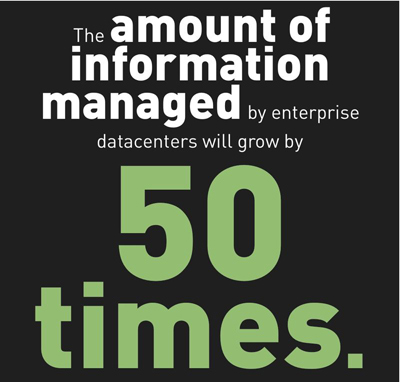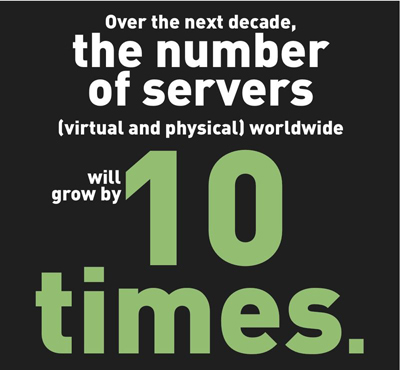Androids and Elephants - BizTech Quick Take
Android Now Integrates with Enterprise-class Security
As smartphone and tablet adoption continues to rise, businesses have to figure out how to integrate the mobile technology that workers are bringing in with their enterprise-class security systems.
This has been particularly challenging as the number of mobile devices and operating systems continues to swell. But IT departments can at least stop worrying about the Samsung Galaxy line of Android-powered devices now that Cisco Systems has announced that Android OS users can be easily integrated into the company’s security with their Cisco AnyConnect Secure Mobility Client.
Peace can finally be made between IT and these rogue users. That’s because some of the hottest Android devices on the market can be integrated with Enterprise-class security! The Cisco AnyConnect Secure Mobility Client can now be downloaded from Google’s Android Market for the new Samsung Galaxy S II Series of smartphones, Galaxy Tab products, and the popular Galaxy S smartphones.
Read the full post on Cisco’s Security blog.
Don’t Ignore the IPv6 Elephant in the Room
It doesn’t have quite the PR scare campaign of the dreaded Y2K bug, but there’s somewhat of a crisis afoot in IT: The Internet is set to run out of IPv4 addresses soon. No worries — the Internet isn’t going to evaporate into thin air, but it will require IT staff to be vigilant in transitioning to the IPv6 format so that everything continues to run smoothly.
This is especially true for data center operators, warns Richard Donaldson in a post for Data Center Knowledge:
IPv4 and IPv6 are not compatible. If you take anything away from this article, this is the most significant. This means that any device that wishes to be “online” must be compatible with both protocols for some time to work properly. To clarify, the world network operators will be “dual stacking” these protocols for some time. This means that both IPv4 and IPv6 will concurrently run on the same wires, even though they do not interact.
While both protocols will be running together for some time, not all hardware or connection points support this concept of “dual stacking.” It is imperative to know this as a data center operator as you begin to assess either how to bring your current infrastructure online and/or design/spec future builds so that all equipment selections support both protocols.
For more on IPv6, read Donaldson’s post on Data Center Knowledge.
Judgment Work Is Coming to a Business Near You
There’s a shift afoot in the type of work and workers that businesses will need in the near future. Knowledge-based work has been stealing the spotlight in the modern workplace, as the market has placed a value on the accumulation, creation and analysis of knowledge and information. But Mark P. McDonald, an analyst for Gartner, thinks that what business needs now more than ever in this uncertain, flexible market is more judgment.
To be clear, using judgment in the workplace isn’t an entirely new concept, but McDonald pinpoints a few important qualities that distinguish knowledge workers from judgment workers:
- Judgment workers make unstructured decisions and take advantage of different sets of information at different times. Knowledge workers make structured decisions using the structured information consistently.
- The goal of judgment work is to reach the best decision/direction possible. There are no right answers, only some better than others. Knowledge workers seek the right decision, which is often possible, as knowledge work has been incorporated into processes and procedures.
- The value of judgment work centers on handling unpredictable situations that are not accounted for in enterprise strategy, policy and processes. The value of knowledge work is to handle planned situations that require the participation and involvement of people to create results.
Read McDonald’s full explanation of judgment work on Gartner’s blog.
Crunching the Big Numbers on Big Data
Chuck Hollis, EMC’s vice president of global marketing, has made it clear that he’s a big fan of big data. And with the release of IDC’s annual Digital Universe study sponsored by EMC, he’s now got some hard data of which to bounce his big data theories.
There’s a smorgasbord of data, stats and information that has emerged from the study, but Chuck has some nifty infographics and a thorough analysis on his blog to help weed through it all.


Read Chuck’s full analysis on the Digital Universe study on his blog.
Provisioning with Microsoft BitLocker Administration and Monitoring Beta
Microsoft announced the release of the beta version of its BitLocker Administration and Monitoring (MBAM) tool, which allows IT staff to manage Microsoft’s BitLocker, Windows 7’s data encryption technology.
AJ Smith, a Microsoft senior product manager, is explaining a few of the techniques and tips for using the beta tool on the Windows Team blog. The first item he tackles in his series is provisioning with the MBAM.
One of the benefits of using MBAM is that it allows IT staff to centrally provision BitLocker and enforce policies across the organization.
Read more about provisioning with MBAM on the Windows Team blog.
TRIM Now Supports SSDs Running Mac OS X
For those who are both Apple and SSD enthusiasts, like Apple founder Steve Wozniak, there’s reason to rejoice. Apple recently released update 10.6.8 for Mac OS X Snow Leopard users and bundled in that update is native support for TRIM.
TRIM is a command that lets the operating system know which blocks of data are no longer in use and free to be overwritten. Using TRIM helps to optimize the SSD and extend the life of the disk in the long run.
Read the announcement about TRIM support on OS X Daily.
Data Can Be Virtualized, Too
Virtualization has swept every corner of IT. Today, storage virtualization, server virtualization and client virtualization have all become commonplace across organizations nationwide.
Hu Yoshida, a vice president and chief technology officer for Hitachi, talks about virtualizing data and the Hitachi Content Platform, the Hitachi solution that takes advantage of virtualization’s instant extensibility and flexibility:
Virtualization of data enables us to de-reference the data from the application that created it so that it can be stored, searched, accessed and repurposed without the application. The business value of the data is enhanced because it is no longer tied to one application.
When data is separated from the application, it is just a bunch of bits, unless you put that data into a container, along with metadata that describes the data and the policies that may govern its use or life cycle. Once the data is containerized, it no longer needs the application that created it and it becomes an object or content that can be used by other applications.
We call this virtualization of data the Hitachi Content Platform (HCP). When combined with our storage virtualization platform, the content resides at the core and can live indefinitely, independent of the changes in infrastructure and applications.
Read the full article on data virtualization at the Hu’s Hitachi blog.
Mind the IT Security Gaps
Most IT managers today understand that any gaps in security can wreak malicious havoc on a business’s IT infrastructure. Yet sometimes, the smallest of measures can help significantly in keeping the company’s data more secure. One effective move is providing password guidelines to workers so that they don’t use “1234” as their password on all of their company accounts.
BizTech’s James E. Gaskin lays out three simple tips that businesses can use to help close the gaps in their security in this BizTech article.
Find great content from the bloggers listed here and other IT blogs by checking out our 50 Must-Read IT Blogs.




